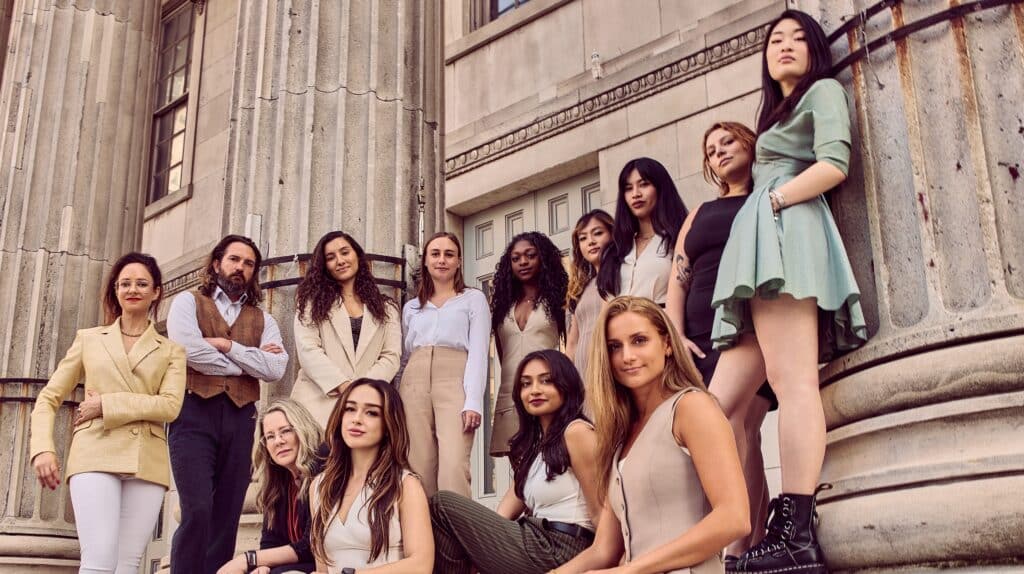11-7-15: Update : We now know that the photos were not consensual. It was a competitive game with points attached to specific photographs. The boy with the largest collection was dubbed “the pimp of pictures.” This is yet another reason why our revenge porn laws cannot contain language requiring that the offender have the “intent to harass, injure, alarm” the victim. Often the offender’s intent, as here, is for the hunt, the game, the trophy. Also, reports are saying that victims are both male and female.
I am so wilted by law enforcers’ backward responses prosecuting kids who shared images consensually within a dating relationship and refusing to prosecute offenders in cases where images went viral without consent.
Today, the New York Times reported that at least a hundred students at a single Colorado high school are part of an illicit photo sharing ring with 300-400 illicit images in circulation, some depicting classmates as young as 8th grade. While Cañon City High School is far from alone in receiving media attention for student-on-student distribution of nudes, this story is unique for its emphasis on the methodology used by students to conceal images from parents and teachers — a “photo vault” app. The app stores pictures behind an unassuming calculator icon.
When news of the “ring” broke Thursday, the local district attorney told parents that some of the children could be criminally liable. As just happened in a recent case of mine, the local school administrator could not help but put on his police cap, burping to the media about his layperson ideas for how the situation should be prosecuted:
“I don’t think [the district attorney] wants to prosecute 100 kids for a class 3 felony,” [Superintendent George] Welsh said. The authorities, he said, would “deal with childhood mistakes as childhood mistakes, and deal with real cruelty as such.”
Presumably the distinction made by Welsh between “childhood mistakes” and “real cruelty” comes down to consent. The reports in this case lack any discussion of whether retrieved images were exchanged privately and consensually between individuals in a dating relationship – or whether images were circulating without the consent of the individuals depicted, or a combination of both. Without consent, distribution of sexually graphic images is indeed “real cruelty” and also violates not just our child pornography and revenge porn criminal laws, but also triggers Title IX obligations for the school. It’s notable that Welsh made this distinction. However, it is not the role of administrators to weigh in on law enforcement proceedings for cases in which they are so heavily involved. After all, in these cases, administrators usually are the ones who report the crime to law enforcers, have access to (and can destroy) evidence as they themselves search devices at the school, and ultimately are witnesses in a court of law. Thus, it is unwise for an educator to broadcast his biases, such as by saying saying what he thinks prosecutors do or do not want to do, when he is in such a position of power to shape the proceeding.
We typically associate Title IX violations with sexual assaults on college campuses or gender parity in sports. However, all federally funded schools and extracurricular programs must abide by it and its anti-discrimination policies. While colleges are now headless chickening in their frantic rush to develop and abide by Title IX so as not to be sued, the same cannot be said of lower education – at least not in the half dozen high school and junior high cases my firm has handled, four of which are active cases and all of which involve our clients becoming the sexual entertainment for their peers as their naked pictures/videos circulated device-to-device through the school halls. In two cases, not only was the distribution of the image without consent, but so, too, was the capture of it. In one case, the sodomy depicted in the viral video, was without consent as well.
I obviously cannot talk about pending litigation, but one thing all our cases have in common is that the Title IX violations did not stop with the student-on-student harassment. Each school actively retaliated against the victim, either by disciplining the victim, telling them to stay home, or recklessly exacerbating the exposure of the victim through their feckless response to the crisis.
Title IX prohibits discrimination on the basis of sex if it denies any student “aid, benefit or service” (34 CFR 106.31(b)(3)). Unlike how we traditionally think of “discrimination” in Title IX there need not be a showing of systemic gender biases. In a case like this, a Title IX claim would be equally available to a boy versus girl if there was a violation. Exile from school, either literally or through the creation of a hostile environment stemming from sexual harassment, is the denial of an aid, benefit or service. Unquestionably, the unwanted distribution of nude images and resulting taunting that usually goes hand-in-hand with it constitutes sexually harassing behavior. Imagine being thirteen and not just having images of your naked body (or your rape) inside your classmates’ devices (albeit hidden behind some sort of calculator app), but to also be called a “thot” in the hallways, to be the topic of hundreds of anonymous social media comments fantasizing about the sex acts that should be forced upon you, overhearing boys at lunch opining in raised voices about the appearance of your genitals, sitting in class while your peers get called out one-by-one for their phones to be checked for your image only to make snide comments upon their return, emails being sent out to 4000 parents about the “sext scandal,” television reporters interviewing your peers outside the school, schoolboard meetings in which other student’s parents testify about your “unbecoming behavior,” articles about the “scandal” in your yearbook and school newspaper, administrators saying it would be “easier” if you just didn’t come to school until the situation gets under control, school resource officers making filthy comments to you, the image recirculating on social media every few weeks.
And let me repeat, that in most of my underage cases, the images were not consensually shared. Coercion or surreptitious filming or sexual assault were involved.
If a school knows or reasonably should know about student-on-student harassment, Title IX requires the school to take immediate action to eliminate the harassment, prevent its recurrence and address its effects. (2011 Dear Colleague Letter, page 4.) A school has notice if a responsible employee knew, or in the exercise of reasonable care should have known about the harassment. This includes situations in which it reasonably should have known about the harassment, i.e., if it would have learned of the harassment if it had exercised reasonable care or made a reasonably diligent inquiry. (2001 Sexual Harassment Guidance, page 13.) Simply because sexual harassment initially occurred off school grounds, if continuing effects of off-campus sexual harassment impacts the educational setting, schools must consider the hostile environment created and investigate accordingly. (2011 Dear Colleague Letter, page 4.) Regardless of whether a grievance proceeding is initiated by the victim, a school that knows or should have known about harassment must commence a prompt, thorough, and impartial investigation and determine, consistent with local law, whether law enforcement or other authorities should be notified. (2011 Dear Colleague Letter, page 4-5.) If discriminatory harassment is revealed during an investigation, the school is responsible for ending it, eliminating any hostile environment and its effects and preventing it from recurring. These duties are a school’s responsibilities regardless of whether a student complained, asked the school to take action, or identified the harassment as a form of discrimination. (2010 Dear Colleague Letter, page 2-3.) When responding to harassment, disciplining the perpetrators is a necessary, but often insufficient step. A school’s true responsibility is to eliminate the hostile environment created by the harassment. (2010 Dear Colleague Letter, page 3-4.)
Under Title IX, schools are not allowed to treat victims and perpetrators as equivalents when it comes to punishment. (Also, see Mary Anne Franks’ The Sext Wars) It is not an option for schools to turn the other cheek if they hear about images being spread, nor to wait for a victim to complain before initiating an investigation. So often schools think the situation is resolved with punishment of whoever they believe is blameworthy, however this can open the victim to further attack from the offender and his/her angry friends. Additionally, punishing the offender does nothing to improving life for the victim. Rather, schools need to provide support and care, social services and counseling to the victim. They must follow up if the victim does not come to school, meet with the parents, and show general compassion. Aggressing against the victim is always going to expose a school to a retaliation claim under Title IX. In one of my cases, midway through a client’s disciplinary hearing, an administrator who was getting fatigued by me, reminded me that it was not too late for her to refer my client to law enforcers for 1) having created child porn, 2) having distributed child porn, and 3) having distributed child porn to a minor. This was for an image my client had taken herself, shared with an abusive high school boyfriend who then circulated the images so widely that her parents heard about it from friends whose kids went to a school two towns away. At the time this threat was made by the school, nothing about her life was the same – the school had removed her from her sport, she had lost twenty pounds, her car had been keyed by friends of the offender, she cried every day before and after school, afternoons were spent monitoring social media for new postings and Twitter accounts.
Schools must be proactive in fighting sexual harassment, including when in the form of nude pictures nonconsensually distributed — both to protect their students and the integrity of the learning environment and also as repellant against attorneys like me. It is time for our junior highs and high schools to comply with Title IX. In not a single one of my middle school and high school cases were my victimized clients referred to a Title IX coordinator, informed that they could initiate a grievance, counseled on their right to not be retaliated against. All these things are required.
Schools that punish and help prosecute students who consensually have images of themselves or their boyfriend or girlfriend on their phones also could be prone to Title IX violations for gender-based discrimination. When images are found on a student’s phones, administrators must get the facts about consent – and not just knee-jerk their response. It is imperative that administrators and law enforcers focus the punishment on those who spread the images without consent – and not the victims or the innocents. Otherwise, I’m comin’ for you.



